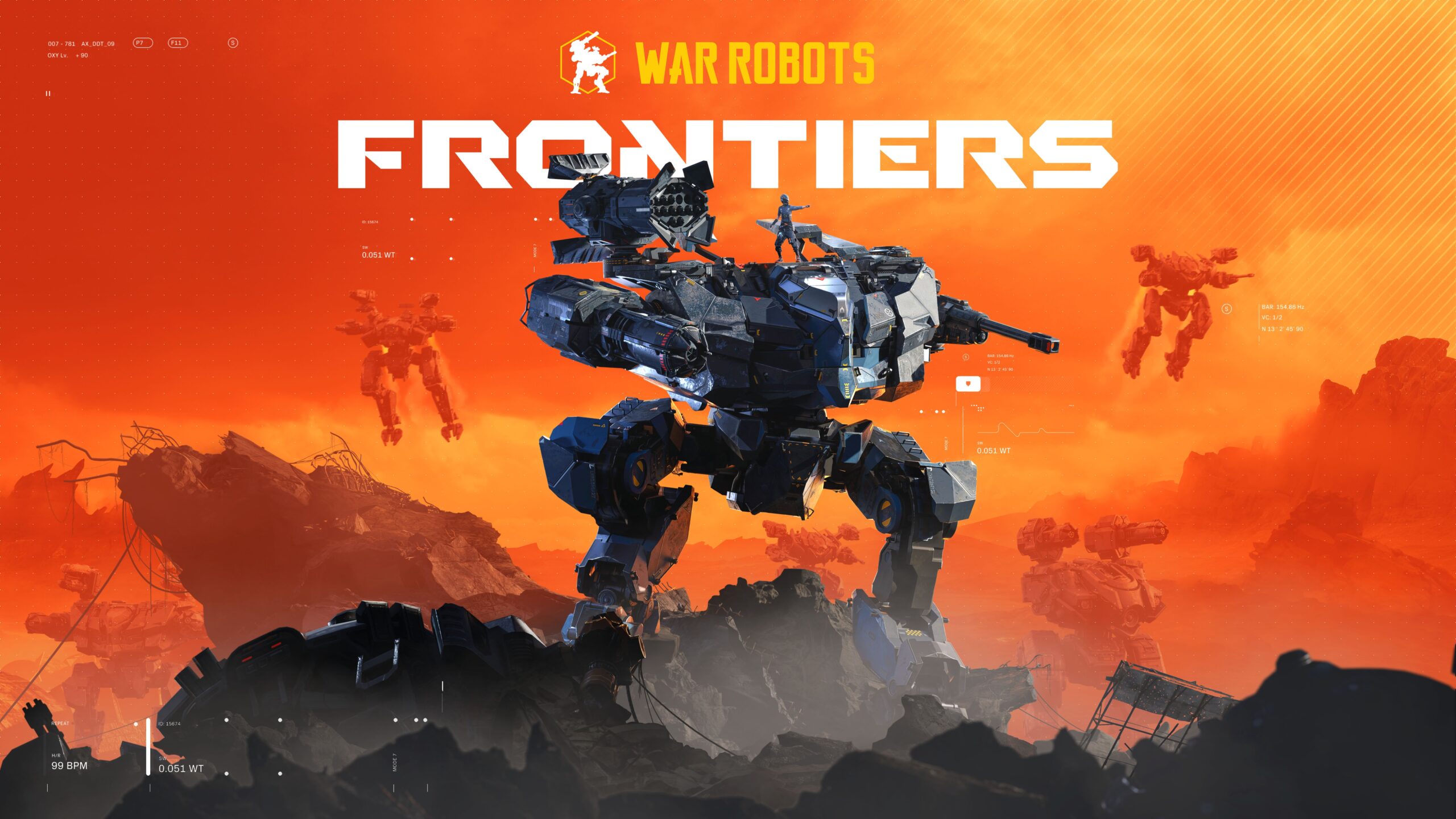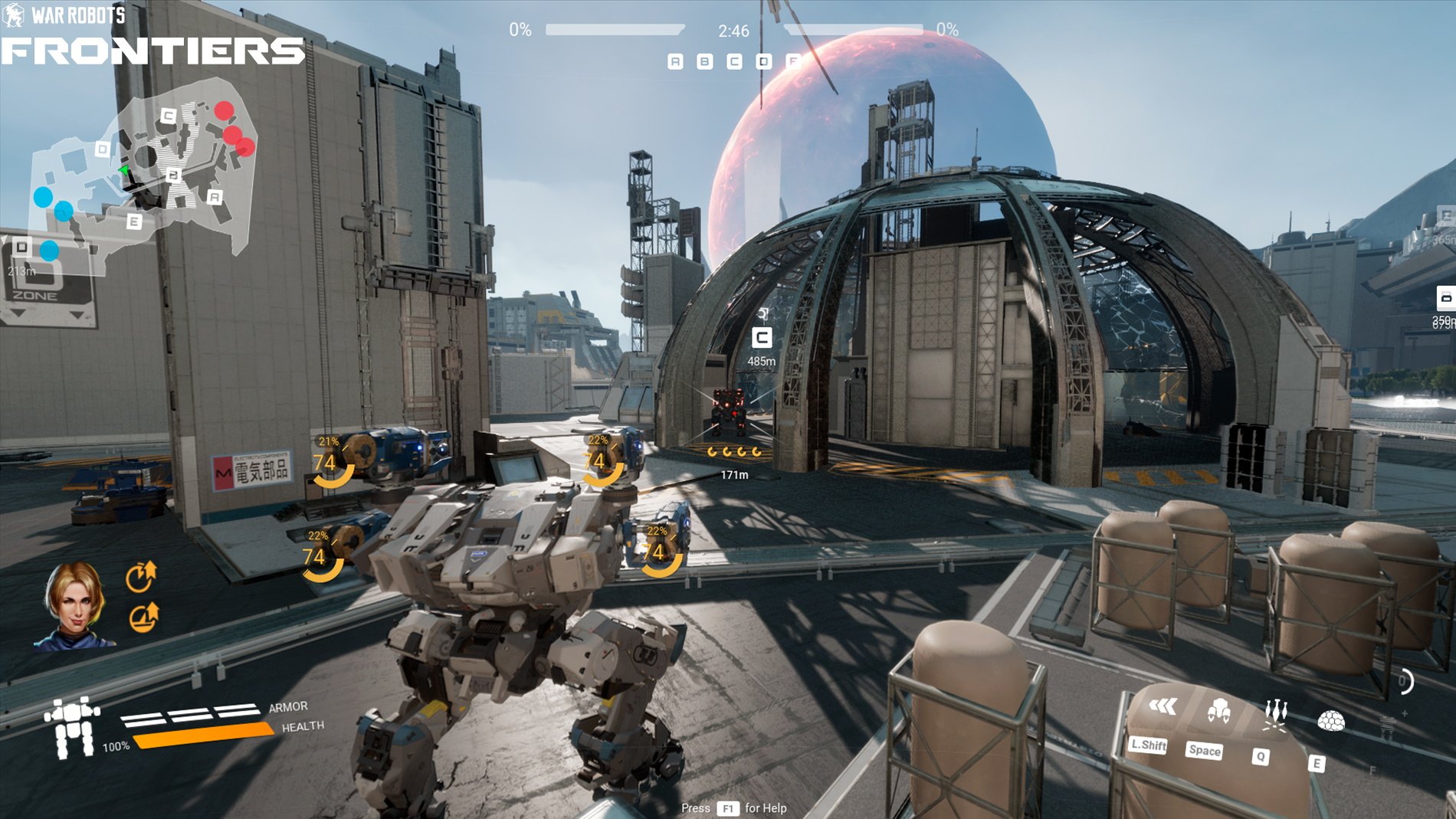
War Robots: Frontiers
| Genre: MMORPG |
| Rating: |
War Robots: Frontiers Review – When Your Gun Has Legs and Attitude
Metal clashes, rockets whine, and smoke plumes curl into alien skies—War Robots: Frontiers isn’t just another shooter. It’s mech warfare with swagger, scale, and enough grit to make your teeth ache.


Big Metal Mood: What Even Is War Robots: Frontiers?
Alright, let’s set the scene. Imagine a squad of towering metal beasts thudding across a war-torn colony planet. You’re not just steering a robot; you are the robot—every move, every twist of a turret or stomp of a foot, it’s you behind the chassis. That’s the hook. That’s War Robots: Frontiers.
This isn’t your run-of-the-mill arcade mech game, either. It’s not polished chrome and anime haircuts; it’s rough, industrial, and tactile. Think diesel-soaked power armor rather than sleek space-age tech. Built by MY.GAMES and Pixonic, and spun off from the mobile hit War Robots, this PC and console version isn’t just a port—it’s a full-on rebuild. And boy, it shows.
The look and feel are grounded. There’s a weight to everything. When your mech lumbers into a battle zone, the world reacts—buildings crack, debris flutters, and your HUD flickers with static like it’s hanging on for dear life. It’s cinematic but grounded. Kind of like watching Pacific Rim, but slower and with a lot more tactical swearing.
Boots Off, Thrusters On: Gameplay Core Loop
Now here’s where the sparks really fly—literally. The gameplay loop in Frontiers is straightforward at first glance: pick your mech, drop into a map, and try not to get turned into scrap metal. But the nuance comes in waves.
You’ve got heavy bots that feel like walking tanks—sluggish, but practically unstoppable once they dig in. Then there are the nimble runners, skittering across the map like caffeinated crabs, dodging rockets and flanking foes. And the mid-weight mechs? The sweet spot for folks who like a little brawl with their brains.
Combat is chaos—in the best possible way. Every encounter feels like a bar fight with hydraulics. You’re firing plasma bursts, watching cooldowns, managing overheating systems, and trying to line up a shot that won’t just chip armor but obliterate an entire limb. There’s a tactile thrill in seeing a rival’s leg give out mid-run, watching them crumple like a beer can underfoot.
The controls, surprisingly, walk that fine line between arcade fun and sim-style heft. You feel the bulk of your bot, but you’re not wading through molasses. And once you start syncing your weapon systems with your movement? That’s when it clicks. That’s when you stop just playing and start piloting.
Build-a-Bot: Customization Without the Headache
Let’s talk tinkering. You know how some games dump you into a customization menu and your eyes glaze over like you just opened a tax spreadsheet? Not here.
Frontiers makes customization feel like loading your rifle before a duel. It’s intimate. Mechanical. Purposeful.
You’re swapping out arms, reactors, shoulder-mounted death-dealers—each one with clear tradeoffs. Want higher burst damage? Sure, but you’ll be cooking your coolant every five seconds. Need more armor? Hope you’re ready to lumber like a walking barn.
What’s refreshing is how your loadout changes your playstyle. It’s not just cosmetic. Throw on a jump jet booster and suddenly you’re hopping rooftops like a metallic goat. Add a shield generator, and now you’re a frontline anchor, soaking damage while teammates flank. It’s the kind of system that rewards experimentation without punishing curiosity.
And for the lore nerds or roleplayers out there—yes, your bots feel like characters. One of mine? I named her “Gertrude.” Slow, grumpy, and armed with a mortar that makes buildings cry. She's a menace.
Maps, Mayhem, and Momentum
The maps deserve a standing ovation—or at least a slow clap while your mech reboots. They’re not just backdrops; they’re battlegrounds with personality.
You’ve got ruined outposts full of narrow corridors and vertical layers. Open canyon spreads with sniping nests tucked between rocks. Industrial zones with destructible cover—yes, destructible. Nothing like ducking behind a concrete slab only for a missile barrage to turn it into sad little pebbles.
What’s great is how the maps influence your strategy mid-match. You start off thinking, “Alright, I’ll hold this choke point,” and next thing you know, the terrain’s shifted—literally—and now you’re knee-deep in rubble with enemies swarming your six.
It adds this lovely, unpredictable rhythm. No match feels the same, even on the same map. And visually, the environments have this lived-in quality. Scorch marks, rust, broken signage in alien scripts—it all adds up to a setting that feels... worn. Like these worlds have history.
Online Brawls and Team Woes
Multiplayer’s where things get deliciously messy.
You’ll go in solo sometimes, expecting chaos—and you’ll get it. But team play? That’s where it shines. There's a sort of gritty beauty in coordinating an ambush with strangers who don’t even speak your language but somehow get your vibe.
“Cover left!” you shout into the void, and someone—somewhere—does exactly that. You lay down suppression fire while a teammate zips around and delivers the killing blow. It’s like jazz. Violent, explosive jazz with more screaming.
But—let’s be real—team coordination isn’t always sunshine and orbital lasers. Sometimes you’re paired with three bots who apparently just wanted to sightsee. And when your squad forgets objectives exist? Painful. That said, the matchmaking usually balances skill and loadouts pretty well. Not perfect, but better than a lot of comparable online titles.
The pacing of matches feels right. You’re not stuck in 45-minute grinds. It’s sharp, punchy, and encourages you to try again—especially if your last run ended with you blown sky-high by some jerk with twin railguns.
UI, Bugs, and That “Still-in-Development” Feel
Alright, time for the gritty bits.
Frontiers isn’t finished. Not entirely. You’ll feel it in the UI sometimes—menus lag a beat, buttons misbehave, settings mysteriously reset. Nothing game-breaking, but noticeable. Especially if you’re jumping in expecting AAA polish from the jump.
There are occasional bugs. A mech clipping through a wall. A match freezing mid-explosion. A respawn camera that stares mournfully into the ground like it’s contemplating existence. Most of it’s been patched quickly, and updates are regular, but yeah—it’s a game still finding its feet.
That said, the bones are strong. The performance? Smooth, even on mid-tier rigs. And for a game this ambitious, that’s saying something.
Who’s Piloting This Thing?
So, who’s gonna love this?
If you grew up building LEGO mechs or sketching war machines in math class, this is your jam. If you like games with strategic depth but still want to feel powerful, you're in good company. And if you're a casual shooter fan looking for something meatier than the usual run-and-gun, this could surprise you.
On the flip side, folks who hate clunky controls or slower-paced battles might bounce off. This isn’t Call of Duty. It’s deliberate. If you want twitch reflexes and instant gratification, you might get frustrated.
But if you can ride the rhythm, learn the quirks, and lean into the mechanical madness? There’s nothing else quite like it.
Final Verdict: Should You Suit Up?
So. Is War Robots: Frontiers worth your time?
Short answer: absolutely—if you’re the kind of player who doesn’t mind a bit of chaos with their strategy, a bit of weight with their firepower. It’s a game that doesn’t pretend to be something it’s not. It wants you to feel the weight of every decision, every bullet, every step.
It’s not flawless. But it’s fun. Raw, grimy, beautifully destructive fun. And if the devs keep tuning it, polishing it, expanding the sandbox? It could grow into something really special.
So yeah, suit up. Let your mech creak and roar and stomp its way into battle. Because in War Robots: Frontiers, the war is just beginning—and honestly, it’s a blast.